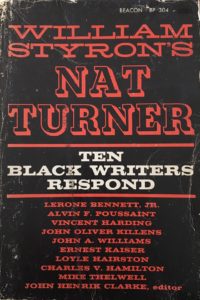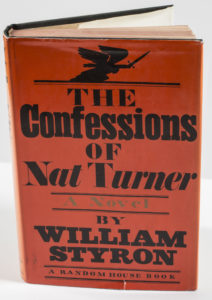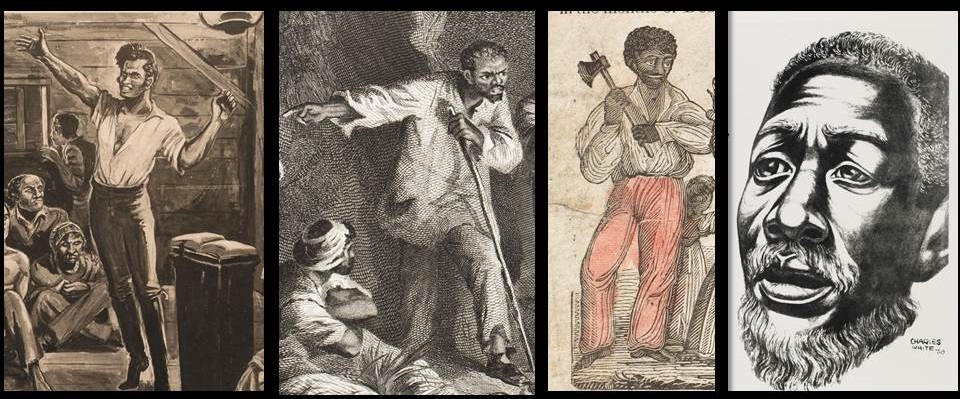AAS recently collaborated with the Lapidus Center for the Historical Analysis of Transatlantic Slavery to create our latest exhibition, Revisiting Rebellion: Nat Turner in the American Imagination.
A man who has been immortalized as a hero and condemned as a charlatan, mourned as a victim and reviled as a traitor, Nat Turner lives in myriad formats and genres in the historical record. In August 1831, he led a group of some fifty enslaved men in Southampton County to attack four plantations, killing any man, woman, or child they encountered, and the effort to define his legacy has been ongoing ever since. No uncontested records of Turner’s own voice remain, and so journalists, polemicists, novelists, poets, playwrights, and filmmakers have imagined Nat Turners that reflect as much what we know about the man as they do about the zeitgeist in which they were created.

In the AAS collections, we found Nat Turner in imprints, from contemporaneous pamphlets to antebellum novels to commemorative histories. We also found him in newspapers, where there was an abundance of mentions, from full articles to small references. Because of the scope of AAS collections, we were limited to nineteenth-century depictions of Turner but we knew that some of the most controversial depictions of Turner can be found in twentieth-century collections.


To capture the Nat Turner of the twentieth century, we turned to one of the foremost collections of African American history and culture: The Schomburg Center for Research in Black Culture in Harlem. Sylviane A. Diouf, preeminent scholar of the African Diaspora and Director of the Lapidus Center for the Historical Analysis of Transatlantic Slavery at the Schomburg Center for Research in Black Culture, agreed to collaborate with us.
Most of the materials she chose are from the John Henrik Clarke Papers. A Pan-Africanist actively engaged in the rewriting of African and African American history, Clarke organized the response among black intellectuals and activists to William Styron’s highly controversial depiction of Turner in his 1967 novel. These papers not only reveal the staunch support Clarke found when he reached out to like-minded individuals to contribute to William Styron’s Nat Turner: Ten Black Writers Respond (1968), but also the opposition encountered, most notably in an unanswered letter to James Baldwin. Perhaps most germane responses to Nat Parker’s controversial depiction of Nat Turner in The Birth of a Nation (2016) is the documentation of an effort to thwart the making of a film based on Styron’s depiction because, according to the Black Anti-Defamation Association, the novel “contain[s] serious historical distortions and defames black people.”

The 1831 rebellion and the response to Styron’s novel bookend Revisiting Rebellion: Nat Turner in the American Imagination. “Portrayals” is the organizing principle for the newspaper clippings, pamphlets, novels, poems, plays, and historical accounts that were published in the 136 years between the rebellion and Styron’s novel. In these works, Turner can be victimized or dehumanized, he can be a religious leader or a false prophet, he can be an abolitionist or a military leader. We had trouble narrowing down the many characterizations to these six archetypes, but we found that these were the prevailing portrayals we most consistently encountered as we read Nat Turner across time and place. As any student of literature knows, a work can contain its own contradictions, and so within a given selection, Turner can be classified as an inspired leader and a bloodthirsty animal. The cross-indexing that digital platforms enable allowed us to capture this multiplicity and, we hope, will facilitate navigation of the site. As the “browse” tab will reveal, there are other ways to search the site—by format or simply by perusing each item.
It is our hope that students and scholars of history as well as of popular culture will make use of this exhibition to reflect on the relationship between race, the historical record, and the American story.
